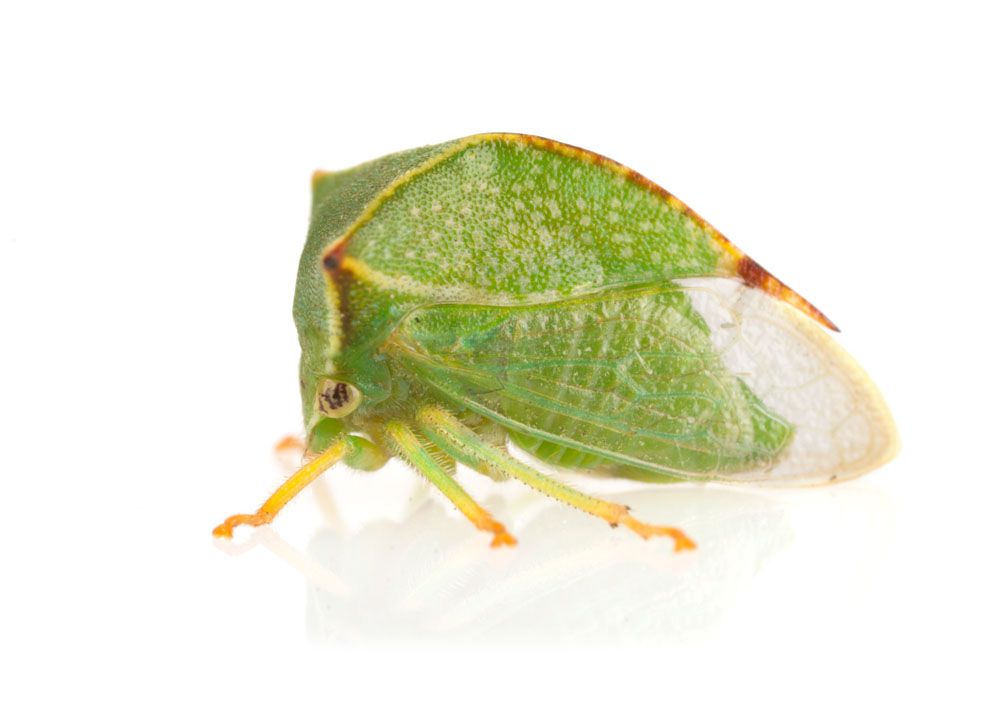
Buffalo Treehopper – Stictocephala bisonia
Buffalo Treehopper: Appearance, Territory, Damage, and Life Cycle
Latin Name: Stictocephala Bisonia
Appearance: These brilliant and vibrant treehoppers are excellent at hiding, as they live on branches of trees, fruit plants, and green foliage. The buffalo treehopper is a North American natural bug. They have, however, expanded across the globe in recent years, encompassing Europe, North Africa, and even portions of Asia.
In terms of appearance, they have a brilliant green body. Some people, though, can be brown in hue. Buffalo Treehoppers are easily identified by their greenish hue and humpback-like appearance. They have huge heads that mimic that of a buffalo. Two protuberances meet at the broadest point of the head. Their black tips resemble horns. It has a brown and yellow ridge on its back that terminates in a ‘tail.’ The sides of the green body are freckled with light yellow dots. Buffalo Treehoppers, which are related to cicadas, have wings that allow them to travel fast from plant to plant, where they lay eggs and collect food.
Buffalo treehopper adults are 2/5 inch or shorter in length and brown or green. Adults have a triangular form when viewed from above. The eggs, which are 1/16 inches long and concealed, are deposited in twigs. The size of the first instar is around 1/12 inch. The rear of the abdomen of nymphs is covered with many spines and has a reddish-brown color. Especially the younger immatures, the nymphs frequently gather in bunches on plant stems. Adults and immatures both leaps easily when startled, such as when they see motion close.
Hosts Plants: They begin eating on a variety of fruit trees as they age, including apple, pear, cherry, prune, and quince. They also eat ash, hawthorn, elm, and locust trees, as well as a wide range of herbaceous (non-woody) plants.
Territory: Although this species is originally from North America, it is now common throughout southern Europe, the Near East, and North Africa.
Damage Insect Cause: Heavy infestations can severely harm young trees because extensive scarring can hinder and weaken limbs. The overwintered eggs hatch in May or June, and the nymphs travel to neighboring grasses and weeds. Weedy orchards and those near weedy areas are particularly vulnerable.
Remove any branches that are infected with eggs, eliminate any alternative hosts such as nearby leguminous plants, and, if required, use broad-spectrum insecticides on the leaves if adults do develop on young apple trees in June or July.
Life History and Habits: Treehoppers go through three phases of development: the egg, the nymph, and the adult. In the form of eggs placed in clusters on slits the females create in the upper side of twigs, they spend the winter. The nymphs emerge from the eggs in the spring to feed on herbaceous plants close to where they are overwintered as eggs. When the females deposit the overwintering eggs in the summer and fall, adults are present. Every year, there is one generation.
